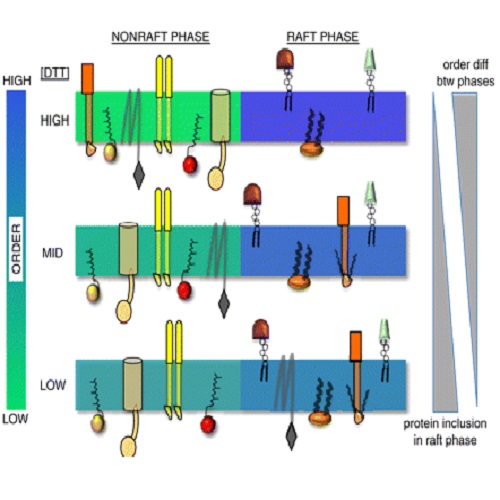Raft domains of variable properties and compositions in plasma membrane vesicles.
Biological membranes are compartmentalized for functional diversity by a variety of specific protein-protein, protein-lipid, and lipid-lipid interactions. A subset of these are the preferential interactions between sterols, sphingolipids, and saturated aliphatic lipid tails responsible for liquid-liquid domain coexistence in eukaryotic membranes, which give rise to dynamic, nanoscopic assemblies whose coalescence is regulated by specific biochemical cues. Microscopic phase separation recently observed in isolated plasma membranes (giant plasma membrane vesicles and plasma membrane spheres) (i) confirms the capacity of compositionally complex membranes to phase separate, (ii) reflects the nanoscopic organization of live cell membranes, and (iii) provides a versatile platform for the investigation of the compositions and properties of the phases. Here, we show that the properties of coexisting phases in giant plasma membrane vesicles are dependent on isolation conditions--namely, the chemicals used to induce membrane blebbing. We observe strong correlations between the relative compositions and orders of the coexisting phases, and their resulting miscibility. Chemically unperturbed plasma membranes reflect these properties and validate the observations in chemically induced vesicles. Most importantly, we observe domains with a continuum of varying stabilities, orders, and compositions induced by relatively small differences in isolation conditions. These results show that, based on the principle of preferential association of raft lipids, domains of various properties can be produced in a membrane environment whose complexity is reflective of biological membranes.

- Proc. Natl. Acad. Sci. U.S.A. 2011 Jul 12;108(28):11411-6
- 2011
- Cell Biology
- 21709267
- PubMed
Enabled by:
